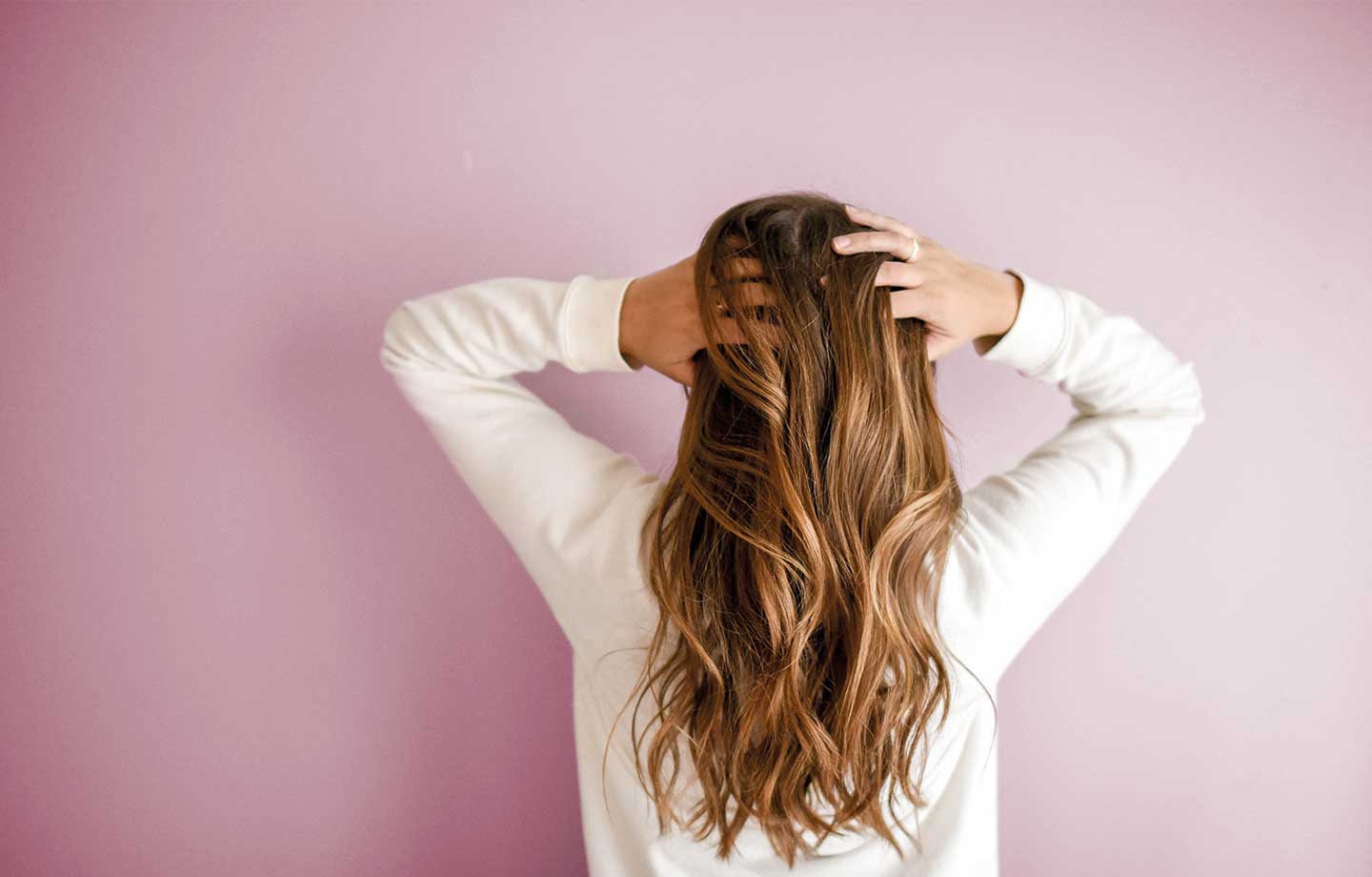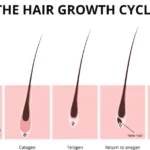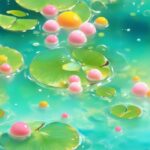Hey there, hair lovers! Get ready to have your minds blown with these incredible hair facts. As a hair professional with over a decade of experience, I’m thrilled to share some mind-boggling secrets about your magnificent mane. Prepare to be amazed by the wonders of your crowning glory!
10 Amazing Facts About Hair
We see it, touch it, and style it every day, but how much do we really know about our hair? Get ready for some serious hair-raising revelations:
- Hair is Surprisingly Tough: Ever wonder how something that feels so soft can be so strong? A single strand of hair is much tougher than it looks. It’s strong enough to support the weight of several coins, and its tensile strength is comparable to steel!
- Hair is a Moisture Magnet: Notice how your hair seems longer when wet? That’s because hair loves water and can soak it up like a sponge! A wet strand can stretch up to 30% longer than its dry length, preventing breakage.
- Hair Can Give You Health Hints: Your hair isn’t just about looks; it can give clues about your internal health. Brittle or dry hair could suggest a lack of vitamins, while unusually thick hair might indicate hormonal imbalances.
- Hair is a Forensic Tool: Did you know that each strand of hair is unique, just like a fingerprint? Experts analyze hair samples to learn about a person’s identity, origin, and even lifestyle habits.
- Your Head is a Hair Factory: The average person has around 100,000 hair follicles on their head, each capable of producing a new hair shaft!
- Hair Growth Varies: While we often hear hair grows about half an inch per month, it’s more complex than that. Genetics, age, and overall health influence individual hair growth rates.
- Hair Color is Globally Diverse: The most common hair color globally is black, while red hair is the rarest.
- Blondes Might Have More Fun (and Hair): Research suggests that people with blonde hair may have more hair follicles than those with darker shades.
- Hair is a Growth Champion: Hair is the second-fastest-growing tissue in the human body, second only to bone marrow!
- Hair Helps Regulate Temperature: Hair isn’t just for looks; it serves a biological purpose. By trapping air close to the scalp, hair helps insulate our heads and regulate body temperature.
What are 3 Interesting Facts About Hair?
Let’s explore some fun facts that might change how you view your locks:
1. Your Hair is Way Stronger Than it Looks (and can even hold surprising weight!)
Believe it or not, hair is much tougher than it appears. This hidden strength comes from keratin, a protein that acts as the building block of your hair shaft. Keratin provides flexibility and resilience, allowing hair to bend and bounce back. A single strand can even support the weight of a hanging apple!
2. Your Hair Growth is Like a Fingerprint – Totally Unique to You!
Ever wondered why your hair grows at a certain pace? Your genes play a big role in determining hair growth rate, texture (curly, straight, wavy), and color. However, your overall health, diet, and stress levels can also impact your hair’s growth cycle and appearance.
3. Your Hair is a Sponge (and a Tiny Bit of Treasure Chest!)
Your hair strands can absorb water and oils, much like a sponge. This porous structure explains why your hair might feel dry or frizzy in certain weather or after using certain hair products. But here’s the fascinating part: hair isn’t just made of keratin, oils, and water; it also contains tiny traces of gold!
Want to Learn More?
The world of hair science is constantly evolving. If you’re interested in delving deeper into the fascinating world of hair, check out resources from reputable sources like scientific journals and health organizations.
What is special about the human hair?
Let’s delve a little deeper into the wonders of human hair:
Did you know that your hair can stretch like a rubber band, up to a whopping 30% its normal length, before breaking? This impressive elasticity is due to its spiral shape and keratin composition.
Speaking of characteristics, ever wondered why your hair is the color it is? It’s all thanks to melanin pigments. Eumelanin is responsible for shades of black and brown, while pheomelanin produces reds and blondes.
Now, let’s talk about hair growth. Hair growth is fastest between 15 and 30. Just like everything else about our bodies, genetics and nutrition significantly impact how fast (or slow) our hair grows. What we consume can significantly affect the health of our hair.
Interestingly, our hair can act as an indicator of our overall health. It’s like a secret code that can reveal things like vitamin deficiencies, hormonal imbalances, and even toxin exposure.
But hair is so much more than just something that grows on our heads. It’s woven into the very fabric of human history and culture. Different cultures throughout time have attributed various meanings and uses to hair, often as a means of self-expression. Hairstyles can be a form of art, a way to rebel, or a symbol of belonging.
And the most incredible part? Scientists are constantly making new discoveries about hair, unlocking the secrets of hair growth, health, and even developing better hair care products.
So, the next time you look in the mirror, take a moment to appreciate those strands on your head. They’re more than just hair; they’re a complex and fascinating part of what makes you, you.
What is a Fun Fact About Hair Color?
Did you know that people with red hair are incredibly rare? Only about 1% of the global population has red hair. And if you ever visit Scotland, you might spot more redheads there than anywhere else, with about 13% of Scottish people having red hair.
Now, you might assume that having less hair would make it the rarest, but that’s not the case. Blondes have the most hair strands – around 146,000! Conversely, redheads have the fewest, with about 86,000 strands.
But here’s something true for all hair colors: it’s like a sponge for smells and oils. This absorption highlights why washing your hair regularly is essential.
And get this – hair is like a secret diary for your body, keeping track of your health, diet, medications, and even stress levels! It’s all recorded in your hair, like a timeline of your life.
So, what determines our hair color? It all comes down to melanin, a pigment factory in our bodies. Melanin decides whether we’ll have black hair, brown hair, blonde hair, or red hair. Black hair is the most prevalent, followed by brown, then blonde, and lastly, our redheaded friends.
Scientists are always learning new things about hair, constantly uncovering fun facts. It’s pretty amazing to think that something we see and style every day can be so complex and fascinating!
Did you know facts about haircare?
Key Takeaways:
- Hair strength: A single strand of your hair is stronger than a steel wire of the same thickness!
- Hair growth and moisture: Wet hair can stretch almost a third more than its dry length, emphasizing the importance of moisture for healthy hair.
- Hair as a wellness indicator: Your hair can provide clues about your overall health and potential nutrient deficiencies.
- Hair’s unique identity: Every single strand of your hair has its own unique chemical makeup, much like a fingerprint, making it valuable in forensic science.
- Hair’s elasticity and porosity: Your hair is surprisingly stretchy and porous, meaning it can absorb and hold onto moisture.
- Hair’s growth rate: Hair grows about half an inch every month on average, but genetics, age, and overall health can cause variations.
- Hair’s color distribution: Black hair is the most common hair color worldwide, while red is the rarest.
- Hair’s cultural significance: Hair has always played a significant role in different cultures throughout history, with various hairstyles, head coverings, and traditions.
- Hair’s role in body temperature regulation: The tiny hairs on our body help trap a layer of warm air near our skin, acting as a natural insulator.
- Hair’s use in diagnostics: Scientists can analyze hair samples to learn about a person’s lifestyle, diet, and even their location history.
What is the hair fact?
Let’s delve into some intriguing facts about those strands on our heads:
Hair: Stronger Than It Looks and Super Stretchy
Hair is surprisingly tough. A single strand is stronger than a steel wire of the same thickness. And it doesn’t stop there – hair is also incredibly flexible. When wet, a single strand can stretch up to 30% longer than its usual length.
Hair: More Than Just Protein, A Glimpse into Your Health
While hair primarily consists of keratin protein, it’s more complex than that. Hair contains tiny traces of gold! Additionally, hair is porous, meaning it can absorb oils and water, highlighting the importance of using suitable hair products.
But hair can also tell us a lot about our health. It can be considered a health journal. Experts can examine hair to determine potential nutrient deficiencies, hormonal imbalances, or toxin exposure.
Hair: A Cultural Chameleon and a Forensic Puzzle Piece
Hair has been a significant aspect of different cultures worldwide. It’s been a symbol of beauty, a means of self-expression, and even a marker of social standing. From long, flowing locks to intricate braids to shaved heads, hairstyles can convey a lot.
Hair has also become a valuable tool in forensic science. Investigators can potentially identify individuals, determine their origin, and gather clues about their lifestyle by analyzing hair samples.
Hair: More to Learn, More to Discover
Despite all that we know about hair, scientists are constantly making new discoveries. Ongoing research promises exciting possibilities in understanding hair growth, health, and the development of innovative hair care products.
Why is hair so special?
Let’s explore what makes hair so fascinating:
A single strand of hair is incredibly strong, even stronger than a piece of steel wire the same size! This strength comes from keratin, the same protein that makes up your nails. Keratin allows your hair to withstand brushing, styling, and occasional tugs.
Hair is also incredibly flexible. When wet, it can stretch almost a third longer than its dry length before breaking. This elasticity is due to the arrangement of keratin fibers within each strand.
And the versatility! Braids, buns, dreadlocks, bobs, mohawks – the possibilities are endless! Hair can be straightened, curled, dyed, and even woven into extensions and wigs, making it a natural fiber with endless possibilities for creativity.
But hair isn’t just about looks. It can provide insights into our health. Dry or brittle hair could indicate a lack of essential vitamins, while excessive hair loss might suggest underlying health issues like a thyroid problem, prompting a doctor’s visit.
Hair also plays a significant role in cultures worldwide. In some cultures, hair is considered sacred and is treated with special care and respect. In others, elaborate hairstyles might be a way to display status or attract a mate.
Beyond its cultural significance, hair has a personal side. From the color we choose to the way we style it, hair is a powerful tool for self-expression, reflecting our individuality and boosting our confidence.
Despite all that we know, mysteries about hair still remain. Scientists are continually studying hair growth, seeking to understand hair loss and discover ways to maintain healthy hair as we age.
What 3 things does hair protect us from?
While you might not always think about it, your hair acts as a natural shield, protecting you in several ways:
- Keeps You Cozy When It’s Cold: Hair acts as natural insulation, trapping a layer of warm air close to your scalp and helping to regulate your body temperature.
- Shields Your Skin from the Sun: The melanin pigment in hair helps protect our skin from the sun’s harmful UV rays, reducing the risk of sunburns and skin damage. While hair provides some protection, sunscreen is still crucial, especially for prolonged sun exposure.
- Helps Your Body Hold Onto Moisture: Hair acts as a barrier against excessive evaporation, helping your body conserve water, especially in hot climates or during physical activity.
While these three protective benefits are well-known, research is ongoing, and who knows what other secrets our hair might hold!
What are the 3 Parts of Hair?
Let’s dive into the fascinating structure of a hair strand:
1. The Medulla:
- This central core, present in some hair types, is like the pith of a tree.
- Scientists believe it contributes to hair flexibility and volume.
2. The Cortex:
- This middle layer, making up most of the hair shaft, is responsible for hair strength, elasticity, and color.
- Pigment cells within the cortex determine your hair color.
3. The Cuticle:
- This outermost layer acts as a protective shield for the inner layers.
- It comprises overlapping scales that help retain moisture and prevent damage.
- A smooth and shiny appearance indicates a healthy cuticle.
Understanding these three layers can help you make informed decisions about hair care, ensuring your locks stay healthy and vibrant.
What Makes Your Hair Unique?
No two heads of hair are exactly alike! Here’s what makes your hair uniquely yours:
It’s All in the Genes (and Melanin!)
Your genes, inherited from your parents, play a crucial role in determining your hair texture (curly, straight, wavy) and color. The shape of your hair follicles, determined by genetics, dictates how your hair grows.
Melanin, the pigment responsible for hair color, varies in amount and type from person to person. More melanin results in darker hair, while less melanin leads to lighter shades. Interestingly, hair follicles produce different types of melanin as we age, which explains why hair color can change over time.
Your Hair Tells a Story
Your hair can provide insights into your health. Dry, brittle hair might indicate nutritional deficiencies, while excessive hair loss could point to underlying health conditions. It’s crucial to consult your doctor if you notice any significant changes in your hair.
More Than Just Strands
Hair has profound social and cultural significance. Throughout history, hairstyles have been used for self-expression, making statements about beliefs, and even signaling social status. From braids to fades to dreadlocks, each style carries its own unique history and meaning.
The Mysteries of Hair Continue
Despite all that we know, scientists are constantly making new discoveries about hair. Ongoing research focuses on promoting healthier hair growth, understanding hair aging, and developing effective treatments for hair loss.
So, the next time you look in the mirror, take a moment to appreciate your amazing hair!
What is Important About Hair?
While a good hair day can boost our confidence, hair is much more than just aesthetics. It plays several vital roles, impacting our health, self-expression, and connection to the world.
Each strand tells a story. Its color hints at your genetic background, while its growth rate can be influenced by age, hormones, and genetics. Doctors and scientists are even finding that hair condition can offer clues about overall health.
Hair also serves as a protective barrier, shielding our scalps from the sun’s harmful rays and potential injuries. And those tiny hair follicles are loaded with nerve endings, providing us with an enhanced sense of touch.
But what truly sets hair apart is its profound cultural and social significance. Throughout history, hair has been a powerful symbol, representing our beliefs, traditions, and place in society. We style our hair to express ourselves, showcase our individuality, and reflect our mood.
Understanding the importance of hair allows us to appreciate it on a deeper level, encouraging us to take better care of it. Hair is an integral part of what makes us human.
Explore further:
- Delve into the intricacies of hair growth with our comprehensive guide on the Hair growth cycle explained.
- Uncover the profound impact of hair on societies globally by exploring the Cultural significance of hairstyles.

















2 thoughts on “10 Amazing Hair Facts That Will Blow Your Mind”
Comments are closed.